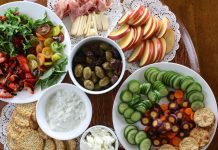
Please talk to your hospital dietitian for recommendations. A blue dye (food coloring) was previously added by hospital staff to tube feedings to detect aspiration of stomach contents in the lungs. The thought was that any sputum containing a blue tint would indicate formula in the lungs, which is a cause of aspiration pneumonia. This practice is no longer recommended due to the limited sensitivity of blue dye to aspiration of liquids from the stomach into the lungs. Further, FD&C blue number 1 toxicity (12.0 milligrams/kilogram body weight/day of FD&C Blue No. 1 is a safe level for humans) is possible since a non-standardized amount of blue food coloring may be added by hospital staff to the tube feeding formula. See Reports of blue discoloration and death in patients receiving enteral feedings tinted with the dye, FD&C blue no. 1. Tube formulas are not manufactured with a blue food coloring.
To reduce aspiration pneumonia, it is generally recommended to place feeding tubes after the valve at the bottom of the stomach (pyloric valve) and feed the patient in a sitting position rather than lying down position. If you have a nutrition support team in your hospital, I would highly recommend contacting them for your hospital’s protocol for tube feedings.
Glucose testing would be on suctioned tracheal secretions, not blood, to determine if the formula had been aspirated into the lungs from gastric contents. Since tube feedings contain some form of sucrose or glucose, the rationale was that a glucose strip used for blood testing would register any glucose found in lung secretions. This practice has not been adopted as a gold standard test for aspiration pneumonia.
Another is the glucose oxidase test strips on tracheal secretions, but it doesn’t detect with 100% accuracy even if the tube feeding formulas have been enriched with additional glucose. This practice is not recommended because the glucose in tube feeding formulas is similar to the glucose in suctioned tracheal secretions.



